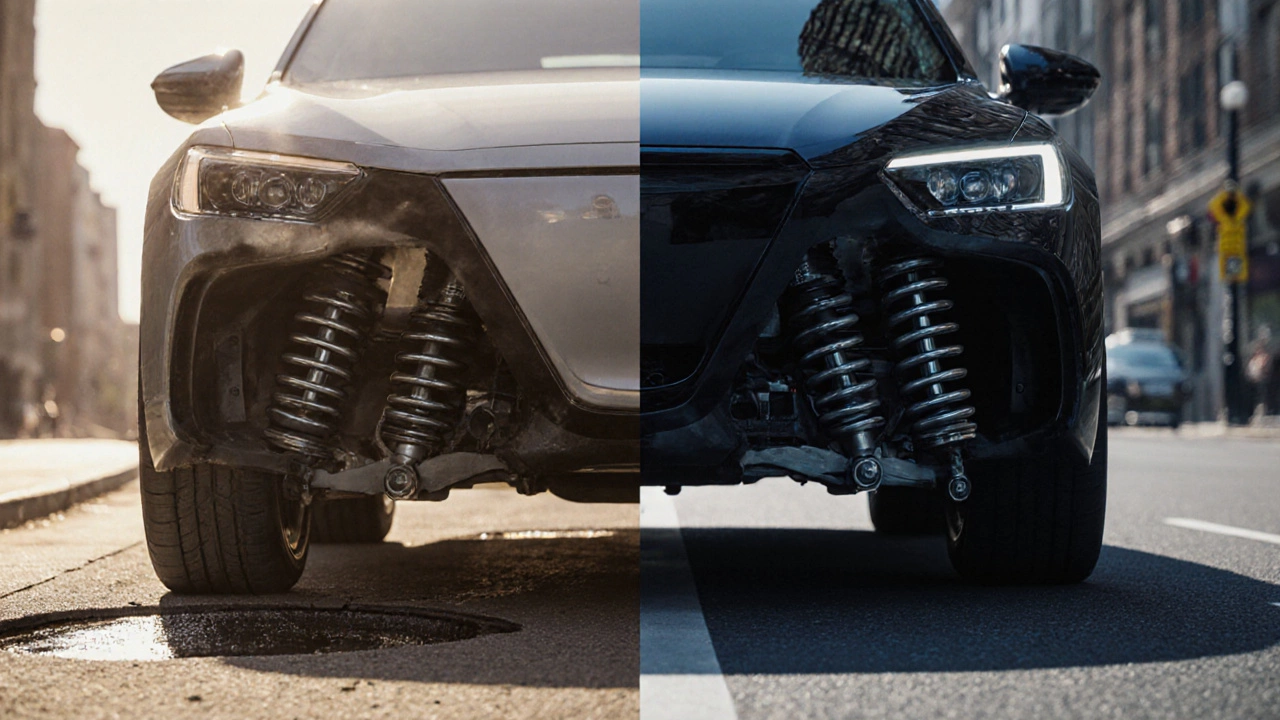Stiff Suspension: Why It Happens and How to Fix It
When dealing with Stiff Suspension, a condition where the vehicle’s suspension offers very little give, making the ride feel hard and unforgiving. Also known as hard suspension, it stiff suspension can turn a smooth drive into a jarring experience. Suspension shocks are the first component that people check because they control how quickly the wheel returns after a bump. If the shocks are worn or tuned for sport, they can turn a normally compliant setup into a rigid one. Suspension springs work hand‑in‑hand with shocks; a spring that’s too high‑rate or damaged will also push the chassis up against the road. Finally, a proper wheel alignment is essential – misaligned wheels force the suspension to fight against uneven forces, amplifying the feeling of stiffness. In short, stiff suspension reduces ride comfort, increases tire wear, and can make handling feel twitchy.
Key Factors Behind a Stiff Suspension
One common cause is aftermarket performance upgrades. Many drivers swap in sport‑tuned shocks or stiffer springs to improve cornering, but they often forget that the factory balance was designed for daily comfort. The trade‑off is a ride that feels like a board on rough roads. Another factor is aging components. Rubber bushings dry out, coil springs lose their elasticity, and shock seals leak oil, all of which limit the suspension’s ability to absorb bumps. Even if the shocks look fine, a loss of damping fluid can make the system feel harsh. A third driver is improper wheel alignment. When camber, caster, or toe are out of spec, the tires scrub against the pavement, forcing the suspension to work harder and giving the impression of stiffness. Lastly, vehicle load plays a role – carrying heavy cargo or additional passengers shifts the suspension’s operating point, making the ride feel tighter if the springs aren’t rated for the extra weight.
Fixing a stiff suspension starts with diagnosis. Listen for clunking noises, feel for a lack of rebound after hitting a dip, and check the tire wear pattern – uneven wear often points to alignment or spring issues. Replacing worn shocks with a performance‑grade but still road‑friendly option can restore a smoother feel without sacrificing handling. If the springs are too aggressive, swapping to a softer or progressive‑rate set will add compliance. Don’t overlook the simple step of a professional alignment; correcting camber and toe can instantly reduce harshness and extend tire life. For drivers who love sportier handling but crave comfort, a compromise is to use adjustable dampers that let you tune the firmness for different driving conditions.
The articles below dive deeper into each of these areas. You’ll find guides on how to spot bad suspension shocks, what bent suspension components look like, and practical tips for assessing whether your ride is simply firm or genuinely stiff. Whether you’re a daily commuter, a weekend track enthusiast, or someone who just wants a smoother commute, the collection gives you actionable insights to diagnose, repair, and fine‑tune your suspension system.
 10 October 2025
10 October 2025
Soft vs Stiff Suspension: Which Is Better for Your Car?
Explore the pros and cons of soft vs stiff suspension, learn how to match your setup to driving style, and get practical tuning tips for comfort or performance.






0